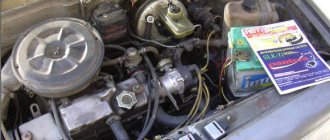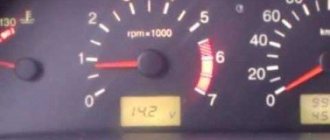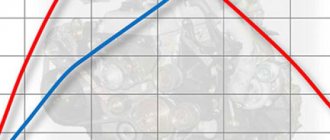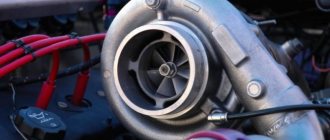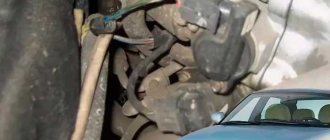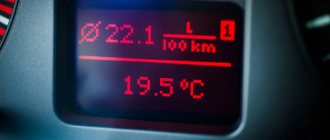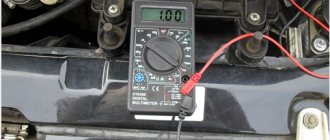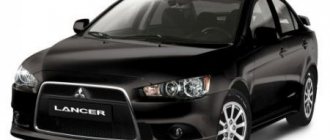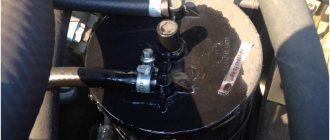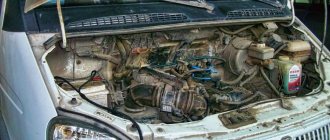An unexpected engine stop while idling is a phenomenon that inexperienced motorists attribute exclusively to the products of the Soviet, and then Russian, automobile industry, and, of course, the automobile industry of the former republics of the USSR. However, this problem also occurs on foreign cars, and even on luxury cars.
Let's look at the main reasons that can lead to the car stalling at idle. And although carburetor cars are still found on our roads, quite often, we will mainly consider injection cars and their breakdowns that lead to a similar effect.
Possible reasons why the engine stalls at idle
1. Errors in the operation of the XX regulator.
In modern cars, such a regulator is performed:
- according to a bypass circuit with control of the bypass channel of air supply bypassing the throttle valve;
- throttle valve angle control;
- regulator in the fuel pump.
To accurately determine the cause of the power unit stopping, computer diagnostics is required.
2. Fuel supply interruptions.
Such malfunctions are most often associated with:
- clogging of the fuel and filter system;
- wear of the fuel pump;
- low pressure in the ramp.
First of all, you need to check the pressure in the fuel rail with a pressure gauge.
3. Misfires, engine tripping
. This is usually associated with critical wear of coils, spark plugs, and high-voltage wires.
4. Sensor errors in the power unit control system and electrical equipment.
The most “influential” sensors in internal combustion engines are the crankshaft, camshaft, and mass air flow sensors. An auto scanner is required to check for errors.
5. Air leaks into the intake manifold and intercooler system.
In this case, an incorrect composition of the combustible mixture is formed, which leads to malfunctions of the engine.
6. Poor quality fuel.
This problem is especially common in diesel engines. At low temperatures, fuel may become waxy. As a result of this process, the pressure in the ramp decreases and the engine may stall.
Troubleshooting sequence
If the effect of stopping the engine at idle occurs, it is necessary to perform the following work sequentially:
- full diagnostics of the car, with decoding of all error codes;
- replacement of faulty sensors, components and modules, the fault of which is indicated by diagnostic results;
- control of fuel pressure in the rail;
- searching for the possible presence of suction in the intake system;
- washing the throttle valve assemblies and the XX regulator with a special agent;
- checking the ignition system components;
- replacing fuel and air filters;
- draining fuel and refilling with high-quality fuels and lubricants.
Source
Why does the engine have unstable idle speed?
If the engine is working properly, when the car starts to start, a warm-up process occurs. At this time, the tachometer needle shows almost 2.5 thousand revolutions per minute; after warming up, the speed decreases. Subsequently, the normal functioning of the power unit is characterized by the tachometer needle being at a level of 750 to 800 rpm.
If a problem arises - the speed fluctuates on a cold engine, this can only mean one thing - serious defects have appeared in the car’s engine, so it works unstably.
In the absence of this device, violations can be determined by the sound coming from the power unit compartment: the rumble and vibration of the engine are noticeable in the form of an increase and decrease alternately. Most often, the engine speed jumps at idle.
Interruptions in the operation of carburetor and diesel engines
Why do engine speeds fluctuate in carburetor cars? Unstable activity may be caused by the following reasons:
- Failure of adjustments in idle modes.
- Failure of the carburetor engine solenoid valve.
- Excessive accumulation of combustion products in the nozzle.
Diesel engines have jumps and drops in the instrument readings during intermediate modes and when idling.
In these cases, they say that the diesel engine speed is floating. The cause is rust formed on the impeller of the high pressure fuel pump. Water contained in diesel fuel causes corrosion.
Consequences of unstable motor activity
All of the above reasons for engines running intermittently cause a number of negative consequences:
- increased consumption of gasoline or diesel fuel;
- environmental pollution with exhaust gases containing an increased percentage of harmful gases;
- increased wear of components and parts of the power unit.
List of measures to eliminate floating revolutions.
To restore stable idle speed, do the following:
- Restoring the air suction function in the engine cylinders.
- Check and subsequent replacement, if necessary, of the IAC.
- Cleaning the ventilation valve.
- Diagnostics of the hot-wire anemometer and its subsequent replacement.
- Cleaning and restoration of the throttle valve.
- Setting up idle modes.
- Replacing the carburetor solenoid valve.
- Cleaning the jet.
- Removing rust from the fuel injection pump impeller.
Problems with idle speed on VAZ 2107 and VAZ 2108
A clogged carburetor in a VAZ 2107 can lead to problems with idle speed
On “classics” and old front-wheel drive VAZs, problems with engine stalling at idle occur quite often. And if we are talking about carburetor modifications, then everything is extremely simple - the problem is most likely in the carburetor. Either it is clogged and needs cleaning, or it makes sense to check the idle fuel jet. This part is directly responsible for the stability of the engine at idle speed and tends to become clogged over time.
It is necessary to remove the nozzle from its seat and blow it with compressed air, rinse it with solvent and gasoline. When such manipulations do not help, it makes sense to check the functionality of the solenoid valve.
The idle fuel jet in the VAZ 2108 needs to be checked if the engine stalls
To check, turn on the ignition and reset the wire from the EMC, then reconnect the contact. A characteristic click should be heard. If not, you need to check the voltage on the wire. The control lamp comes on - the valve is faulty. The easiest way is to replace the part with a new one and check if there is a difference. But even without a spare jet on hand, it’s realistic to go another day or two, using the “old-fashioned” method. You can simply break the needle of the solenoid valve. True, this will slightly increase gasoline consumption.
Injection versions suffer from typical malfunctions caused by the short life of sensors: IAC, MAF, as well as throttle position sensor, crankshaft position sensor. In rare cases, the source of problems becomes an unstable electronic control unit. You should look for a replacement at a showdown.
Description of actions to eliminate speed instability
When carrying out measures to restore air leaks, the tightness of the lines supplying air to the collector is checked.
Each tube is removed and purged using a pump or compressor. Additionally, a WD 40 solution is used. Where the liquid evaporates quickly, the integrity of the line is compromised, in which case the hose must be replaced with a new sample.
To diagnose the idle air control valve, use a multimeter to measure its resistance. If the resistance value is 40–80 Ohms, the regulator needs to be replaced.
The crankcase is disassembled to remove the ventilation valve and then washed in kerosene to remove oil deposits. After thorough drying, the valve is returned to the ventilation system.
If the mass air flow sensor fails, it is replaced with a new one.
When cleaning the throttle valve, special aerosols, a brush, and rags are used. This procedure can be performed directly on the engine, which has had time to warm up, or by removing it from the power unit. The appearance of white smoke indicates that oil sludge has been removed. After flushing and installation are completed, the dampers are reprogrammed to set the nominal opening gap.
A breakdown of the solenoid valve contributes to the occurrence of jumps in engine speed. This item cannot be restored and must be replaced.
The jet is cleaned using a special aerosol liquid used when washing carburetors. The product is poured into the nozzle, after five minutes the cleaning liquid is removed using compressed air.
To treat the fuel injection pump impeller, a special agent is used to remove traces of corrosion. It is sprayed directly into the neck before pouring fuel. Cleaning the inside of the tank is done using this product. To prevent corrosion, 200 grams of engine oil is poured into the fuel tank to protect the blades.
If the engine starts to jump at idle, the speed is disrupted when the engine warms up, you need to undergo diagnostics at a service station in order to check and restore the integrity of the components and parts of the power unit systems.
Source
The car does not start for a long time and stalls immediately after turning off the starter
Sometimes it happens that the engine either refuses to slow down when you release the gas pedal, or, on the contrary, suddenly stalls at idle. A significant proportion of these cases are due to a faulty engine throttle valve. In other words, it is clogged and jammed.
This can occur due to prolonged driving on low-quality fuel, of which we have plenty, as well as from dirt impurities in the air entering through the air filter.
This problem can be mitigated by regular cleaning of the throttle valve. To do this, it is recommended to use a universal cleaner for purging carburetors and other car parts; it comes in metal cans and is sold at any auto supply store.
It is also worth paying attention to the inevitable clogging of the oil trap in the crankcase ventilation system, as this is just a matter of time. If the filter becomes dirty, the engine literally begins to choke from excess crankcase gases, as a result of which it does not hold idle speed and stalls. The crankcase ventilation filter must be washed regularly.
The car stalls at idle: causes and solutions
There were no signs of trouble: the car started up easily and worked perfectly. The time comes to take your foot off the gas pedal and the revs immediately begin to drop. The car stalls at idle, stops and the ride suddenly stops. Most car owners have encountered a similar situation with gasoline and diesel at least once in their lives.
The most common reasons:
- incorrect operation of the idle speed sensor;
- failure of the sensor responsible for the throttle position;
- throttle contamination;
- contamination of the carburetor or injector in the engine.
Since these reasons are little related to each other, diagnostics can take a lot of time, and not every car owner is able to carry it out on their own. These breakdowns are not considered serious and their elimination does not require much effort.
Mechanical problems
The next group of breakdowns and malfunctions relates to the mechanical component of the car system. For example, the throttle valve. If it is clogged, the car may well stall at idle. It should be noted that a clogged throttle manifests itself in the fact that the car begins to respond worse to pressing the gas pedal. In this case, the throttle is removed and thoroughly washed with carburetor cleaning fluid.
Also, sometimes the car stalls at idle if there are problems in the vacuum lines of the fuel system. But here you can’t do without a good car repair specialist.
A clogged injector or carburetor, among other things, can also cause the car to stall at idle. It would also be a good idea to check the fuel and air filters, as well as the fuel pump.
In the cold season, problems with starting diesel cars are associated with crystallization of diesel fuel at low temperatures.
Another rather insidious and not particularly noticeable problem can be the EGR valve. The exhaust gas recirculation system is generally a very controversial thing. You can’t immediately tell whether it is more beneficial or, on the contrary, harmful. One way or another, a faulty EGR valve will successfully shut down your car’s engine in idle mode.
Common problems on all engines at idle
There are a number of problems that are typical for all power plant designs. Due to the design features of internal combustion engines, at idle speed, malfunctions and interruptions in operation stability may occur.
Problems with carburetor engines
- Idle jet clogged. When using low-quality fuel, thin passages can become clogged with debris or grains of sand, which causes unstable engine operation.
- Low permeability of air and fuel lines. If there is insufficient amount of fuel or oxygen, the power plant does not hold idle well and may stall.
- Incorrect ignition setting or system problem.
Why does the injector stall at idle?
The injector is characterized by the presence of factors:
- incorrect operation of the computer;
- clogged injectors;
- failure of individual sensors.
Diesel won't idle
They are capricious due to the following reasons:
- problems with the injection pump system;
- insufficient purity of diesel fuel;
- breakdowns within the fuel or air line system.
They may stall in winter due to fuel freezing.
Difference between carburetor and injection filters
It is worth noting that the pressure levels in these intake systems are different. For injection engines it is many times greater. Therefore, when purchasing new fuel filters, you should check with the seller which engine you have. This is especially true for cars on which different types of systems were installed (for example, old and new “tens”).
If you put a filter designed for a carburetor on an injection engine, it simply will not withstand the pressure. All dirt will end up in the pump injectors. They get clogged, so the engine stalls at idle. As for air filters, they are very easy to distinguish. In carburetor engines they have a round shape.
Common causes of engine stalling at idle
Separately, the most common problems leading to engine failure without an applied load should be described.
The idle speed controller is faulty
The problem is typical for injectors and modern internal combustion engines. A smart unit often fails due to mechanical damage, natural wear, or incorrect calibration.
The electronic regulator has several weaknesses:
- signal sensors;
- control relays;
- fuse system.
Throttle valve dirty
A sensitive throttle often becomes the reason for visiting a service station. In the idle position, the damper on most designs opens only partially. When carbon deposits appear on the surface of the valve, the passage opening decreases. The negative effect reduces the idle speed or may cause engine failure.
To fix the problem, just clean the mechanism and put it back in place.
Idle fuel jet clogged
Frequent breakdowns in carburetor engines. The fuel jet is a screw with a thin hole drilled inside. If low-quality fuel is used, or rust appears in the gas tank, the line becomes clogged, which prevents the free passage of liquid.
Fuel pump malfunctions
The engine behaves similarly when this part wears out or malfunctions. When the internal combustion engine is idling, the working part of the unit rotates slowly, the pressure in the fuel system is minimal. When the pump impeller wears out, its performance drops noticeably. The effect is especially noticeable at idle speed.
Fuel filter dirty
The following problem is common to all power plants, regardless of the design and type of fuel consumed. When the filter element is clogged, the throughput of the device is reduced to a minimum. An amount of fuel that is insufficient to maintain stable engine operation enters the combustion chamber.
Malfunction of the mass air flow sensor
The mass air flow sensor is responsible for reading and adjusting the supplied air flow. If the sensor transmits incorrect information, the ECU will not adjust the fuel mixture correctly. Consequently, the power unit will fill or lack gasoline.
Contamination of the crankcase ventilation system
It may become clogged due to the use of low-quality oil, fuel or lack of maintenance.
When excess pressure appears inside the crankcase, the system stops functioning normally, excess pressure is created in the engine and the internal combustion engine stops working.
Causes of failure
Depending on the type of engine, there are many reasons why a car stalls at idle.
Carburetor engine
For example, if we are talking about a carburetor engine, then the factors that cause it to stop are:
- Poor quality fuel. This is the most common reason why the engine stalls at idle.
- Problems with candles. A huge number of electrical products for cars are sold without a guarantee of quality operation. Among these products are candles. Buying even the most expensive four-pin spark plugs does not guarantee their eternal and perfect operation. There are cases when completely new spark plugs cannot withstand even an hour of use. But the unstable operation of spark plugs does not always depend on the quality of the spark plug itself. Among the reasons leading to the problem are low-quality fuel, incorrectly adjusted ignition and wear of the engine piston system.
- Electrical wiring fault. A bad spark or its complete absence is not always the result of incorrect spark plugs. The problem can also arise as a result of electrical wiring faults, in particular, the wires going from the spark plugs to the distributor. If a spark “shoots” from the wire, the engine will run poorly or it may stall when revving up.
- Fuel filter clogged. The simplest and most common reason why a car stalls when revving up. Typically, the fuel filter becomes clogged due to prolonged use, low-quality fuel, or dust getting into it.
- Air filter clogged. Many drivers do not pay enough attention to the air filter, believing that its role in the car is minimal. If this filter is clogged, there will simply be no idle speed due to lack of air in the system.
- Clogged idle jet. The idle jet is considered the weak point of all carburetor engines. It gets clogged very easily and is difficult to clean.
- Fuel pump malfunction. The fuel pump in carburetor engines is one of the most problematic areas. This is explained by the fact that often if it overheats, it stops and the engine stalls at idle. In addition, the fuel pump membrane is easily damaged or deteriorated under the influence of fuel, which causes the engine to stop idling. If you press on the gas pedal, the speed may still be there, but not idle.
- Incorrectly adjusted ignition. Very often, this is the reason why the engine stops and is ignored by many drivers. If there were no problems with the ignition before, this does not mean that it could not have gone astray. Due to engine vibrations, the fasteners of the distributor can weaken, which, in turn, allows it to turn. In this case, even fractions of a millimeter play a role.
- “Sucking” air through the carburetor body can also cause the car to stall. The problem occurs due to a damaged carburetor body or a missing or damaged gasket.
This is interesting: What kind of sandpaper should I use to matt a car before painting?
Injection engine
If an injection engine stalls, the reasons are largely the same as the reasons for the breakdown of carburetor engines, but there are some differences:
- No spark. The main difference between an injection engine and a carburetor engine is the type of fuel supply. In the first case, it is supplied to the carburetor, and in the second, to the injector through injection (hence the name). The spark formation process will be controlled by a special unit, not a coil. If the unit is faulty, the spark will be poor or completely absent. In addition, the reasons for the lack of a spark may be inoperability of the spark plugs, problems with the wiring, wear of the piston system, which leads to oil getting on the spark plugs, low-quality fuel, which will clog the spark plugs.
- Incorrect operation or breakdown of the idle speed sensor. It is this part that most often causes the lack of idle speed on an injection engine.
- Malfunction of the mass air flow sensor.
- Damage to rubber tubes in the air supply system.
- Injector clogged. This reason is very difficult to determine, since you will have to use special equipment that a simple car enthusiast cannot buy.
- Fuel pump malfunction. The fuel pump of an injection engine is significantly different from the fuel pump of a carburetor engine. The main difference is in the control system. In this case, this process is implemented through electronics, which may fail. But the reason may also be a simple clogging of the cleaning mesh in the flask with the fuel pump.
- Clogged fuel lines. This reason for the lack of idle speed can occur in both engine options.
What to do first
It’s good if it is possible to carry out computer diagnostics at a service station. The devices make it possible to identify faults in individual parts of the machine not only more accurately, but also noticeably faster than with traditional methods.
Problems with sensors and other electronics
If you have a modern car, you should check the serviceability and settings of sensors and units. Such problems are often found using computer diagnostics. In a modern car design, correct operation of the sensors guarantees stable engine operation by 90%.
Electrical problems
On carburetors, the ignition timing setting may be lost. Regardless of the type of internal combustion engine, spark plugs, coils, relays and fuses fail or malfunction.
Mechanical problems
- carburetor;
- throttle valve condition;
- fuel/air line;
- pumps;
- filter elements;
- wear of the cylinder-piston group.
If the problem cannot be found, you should contact a service station.
conclusions
Owners of cars that have begun to stall should pay primary attention to the cleanliness of the filters, injectors and carburetor, as well as the integrity of the connections. If everything is in order with them, then with a high probability the whole problem is in electronics and this cannot be done without outside help. It is important not to forget about preventive measures, such as regularly cleaning parts and checking the serviceability of sensors.
Specialization : Graduated from the State Automobile University, worked for 20 years at GAZ-56, now I drive a Zhiguli.
Source
The engine stalls at idle: solving the problem
When making repairs yourself, you may need to carry out the following actions:
- complete replacement of sensors;
- restoration of the performance of individual elements, whose life can be extended;
- preventive work to avoid recurrence of problems of this kind.
Complete replacement of broken equipment is required when some devices break down. When the engine stalls, it cannot be avoided if the reason lies in faulty throttle or idle position sensors. Often they prefer to replace the throttle valve itself. The carburetor or injector is replaced only if cleaning does not help.
The engine turns off periodically when idling
It does not play any role, the car engine turns off sometimes or with a certain regularity - the causes and solutions to the problem do not change. The main thing to remember is that even a small frequency of occurrence of a problem is a sign of poor performance of the car’s internals.
The car starts to “cough”, the engine stalls after starting
Blocks to check:
- ignition system;
- correct setting of mixture formation;
- quality of the fuel used.
The car stalls at idle even though it starts
If the car, after starting the engine, jerks when you press the gas, the speed is unstable, and then drops completely and it stalls, then the fault probably lies with the fuel pump or dirty filters. You can learn more about the problem from the video.
The car starts and stalls immediately after the starter is turned off.
If this problem occurs, it is recommended to check the serviceability and calibration of the modules:
- immobilizer setting;
- correct setting of the alarm mode;
- serviceability of the ignition switch.
Car stalls at idle when cold
The problem is common on the Opel Corsa car. The car cuts out at idle if the engine is not warmed up. The same thing happens with cars of other brands. The reasons are the same:
- unexpected vacuum leak;
- breakdown of spark plugs;
- rotor failure;
- problem with the distributor cap;
- The engine ignition timing is set incorrectly;
- malfunctions in the electronic control unit;
- problems with the recirculation valve;
- wear of power plant elements or mechanical damage;
- contamination of fuel injectors;
- Incorrect operation of the cold speed regulator.
Some faults can only be identified with the help of special equipment. Especially, incorrect operation of the electronic control unit (ECU).
The engine stops idling when the engine is hot
You have a relatively new Priora, you start the car and with the engine warm, press the gas, release the pedal and suddenly it starts to stall. This picture is familiar to many car enthusiasts who own this model and several others similar to it. The reasons why a car stalls when heated are not all, but they are similar to problems with a cold engine. Unless the cold speed sensor plays no role here.
Gasoline engine does not idle
Let's start with the fact that this malfunction indicates two possible causes: failure of individual mechanisms, components or sensors, as well as severe contamination of certain elements. In both the first and second cases, it is necessary to carry out a diagnosis. The engine on injection and carburetor cars can most often stall at idle in the following cases:
If the car immediately stalls or the speed fluctuates noticeably after the starter is turned off, then you should pay attention to the throttle assembly. It is possible that the valve may become clogged or the mechanism may become jammed. This malfunction, especially severe contamination, occurs as a result of prolonged driving on low-quality fuel, as well as untimely replacement of the air filter.
In this case, the throttle valve needs to be cleaned. To clean the throttle, use a regular “carbicleaner” (a product for cleaning carburetors), and you also need to blow out the valve using compressed air from the compressor. If these steps do not help, then you will need to evaluate the condition of the oil trap. This element is an integral part of the engine crankcase ventilation system. A dirty oil trap causes crankcase gases to “choke” the engine, idle speed floats and the internal combustion engine stalls.
Now let's look at a situation where the car starts normally, but then starts to stall (constantly or with a certain frequency). A similar situation often occurs on fuel-injected cars that have an electronic engine control system (ECM).
It is advisable for owners of cars that have been in use for a long time to have these sensors in stock, as well as a multimeter for self-diagnosis. This is especially necessary if the car is often used for long trips along the highway. Note that most of these sensors have an acceptable cost.
Another important point is that the car may start to stall at idle after flashing the ECU. Unprofessional correction of the factory firmware, flashing or chip tuning of the electronic engine control unit can lead to failures. Although the engine after such actions demonstrates better performance under load, at high speeds, etc., in parallel, the unit is not able to operate normally at 750-800 rpm. In this case, the installed firmware should be adjusted to achieve stable operation of the internal combustion engine in all modes.
Now a few words about the carburetor. The engine often stalls on such engines precisely because of contamination of the jets and prolonged lack of proper carburetor adjustment. The fact is that even small particles of debris in the fuel can disrupt the operation of carburetor injection. Dirt can be contained either in low-grade gasoline or enter the system from the gas tank, in which deposits gradually accumulate.
This product is a solvent-cleaner in an aerosol can. As for the mechanical fuel pump of carburetor engines, this type of pump has a filter mesh. This element can also become clogged, reducing pump performance. The membrane of a mechanical fuel pump can also fail. In parallel with wear, membrane particles clog the channels in the carburetor.
With an injection system on an injector, the situation is more complicated. If replacing the ECM sensors does not help, then you should start checking the intake manifold for excess air leaking into the intake, and also eliminate air in the fuel system. Then you need to move on to checking the injection nozzles, measure the pressure in the fuel rail, inspect the vacuum hoses, etc. The vacuum brake booster will require special attention. We also add that regardless of the type of injection (engines with an injector or carburetor), it is necessary to check the ignition, spark plugs, high-voltage wires, distributor coil and other elements of the system.
